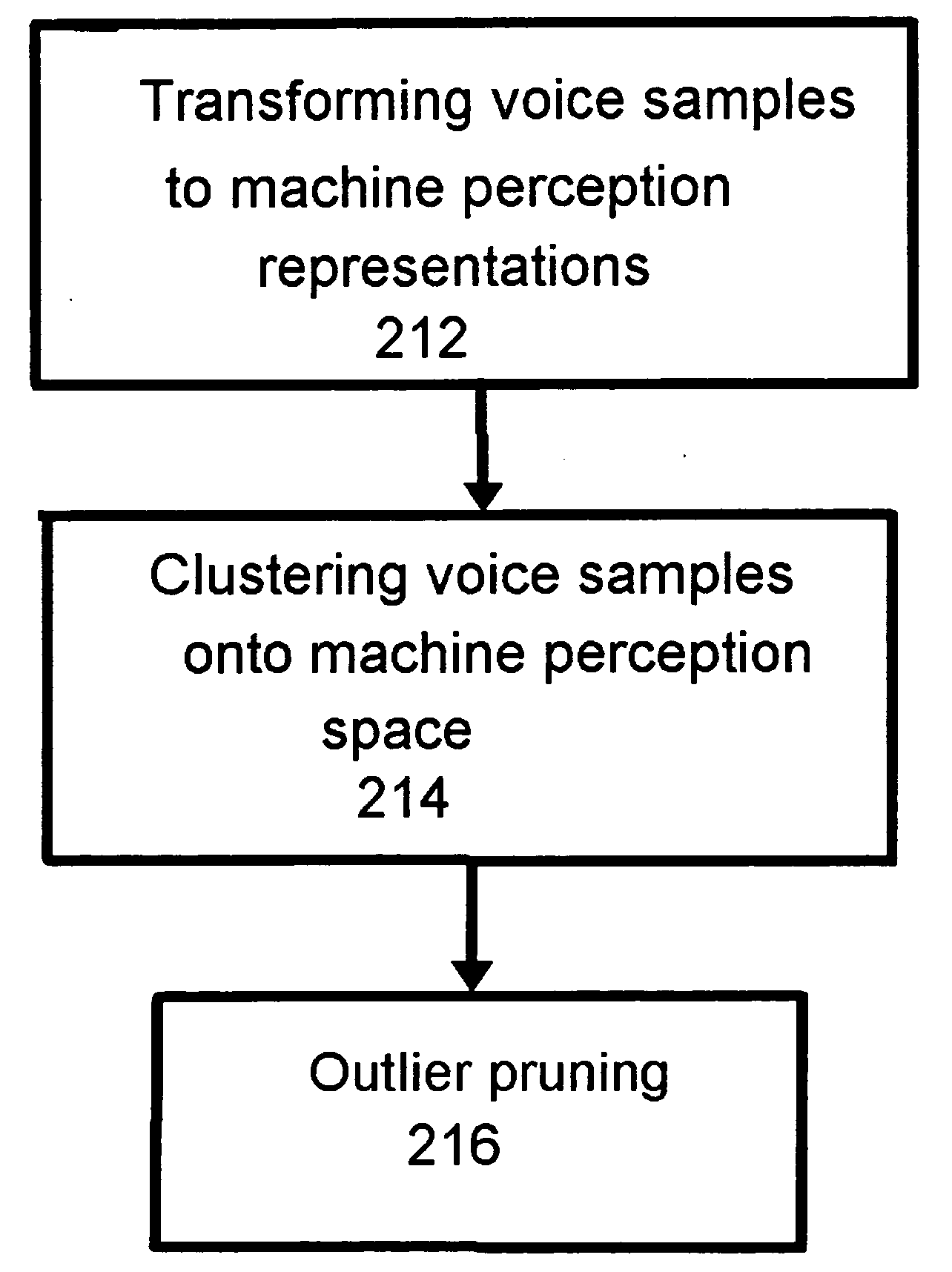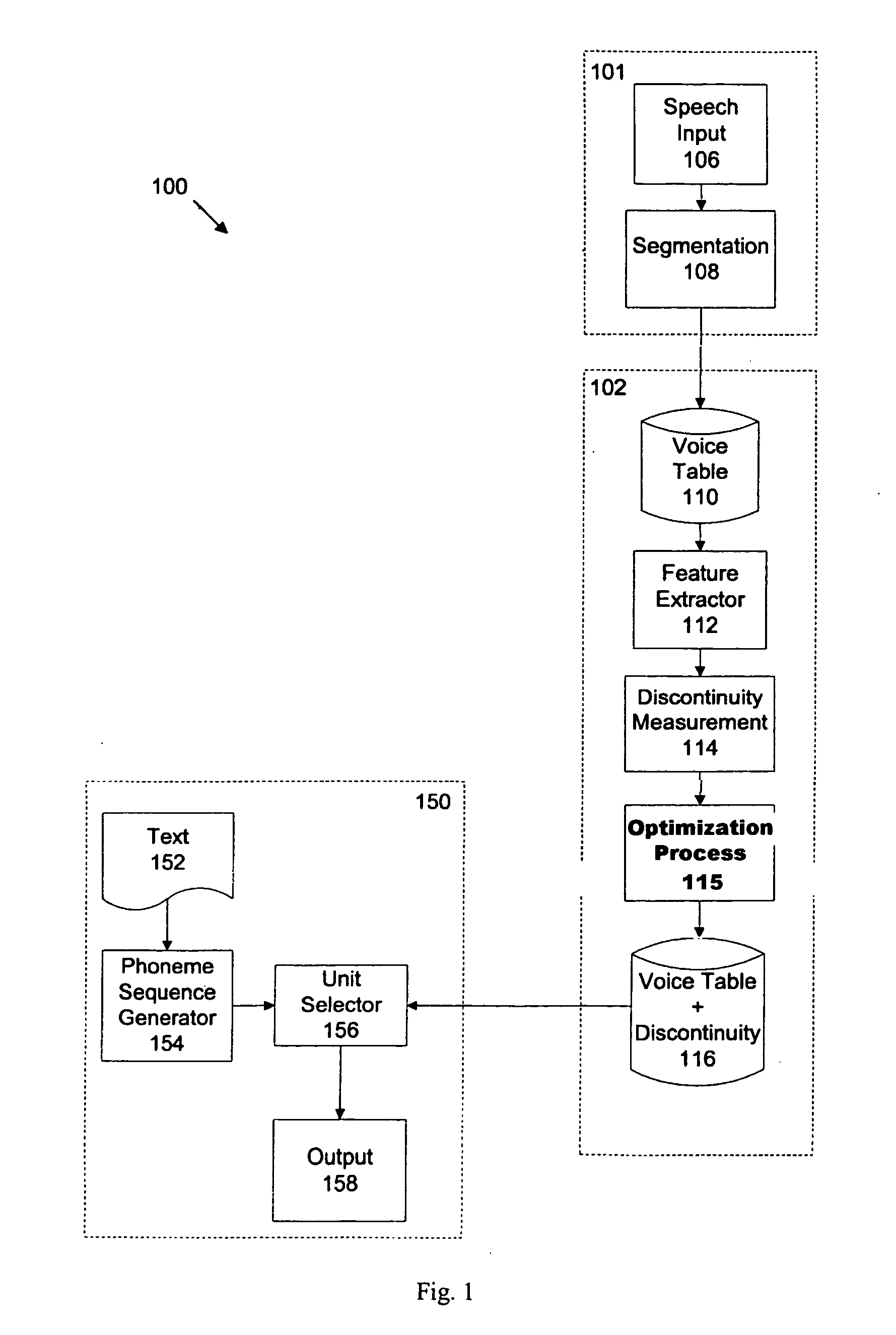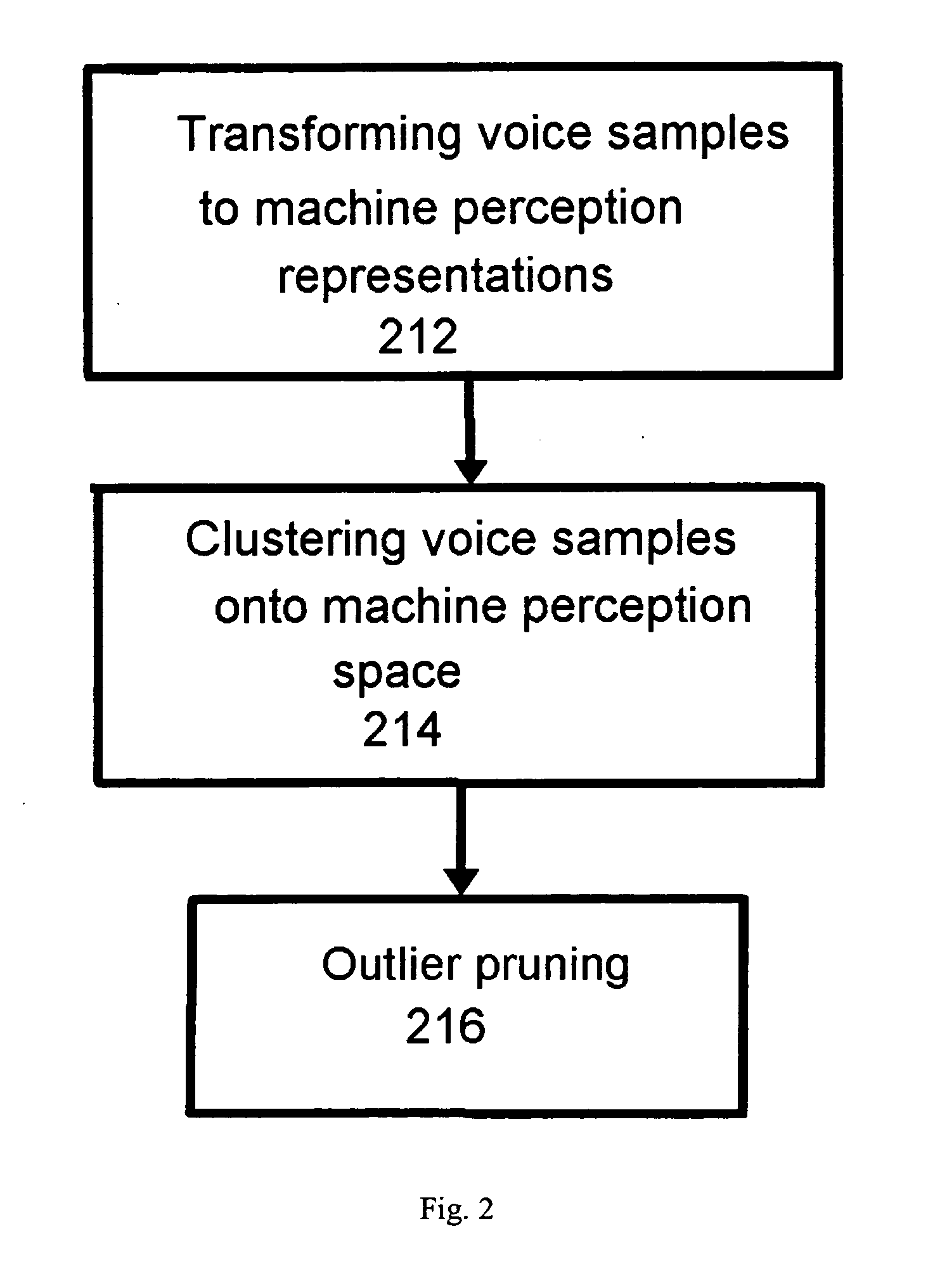Methods and apparatus related to pruning for concatenative text-to-speech synthesis
a technology of concatenative text and speech, applied in the field of text-to-speech synthesis, can solve the problems of large size that is not practical for deployment in certain data processing environments, and the tts system may be too big to ship as part of the distribution of software packages
- Summary
- Abstract
- Description
- Claims
- Application Information
AI Technical Summary
Benefits of technology
Problems solved by technology
Method used
Image
Examples
Embodiment Construction
[0023]Methods and apparatuses for pruning for text-to-speech synthesis are described herein. According to one, the present invention discloses, among other things, a methodology for pruning of redundant or near-redundant voice samples in a voice table based on a machine perception transformation that is conceptually similar to human perception, and this pruning may be scalable, automatic and / or unsupervised. In an embodiment of the present invention, redundancy criterion is established by the similarity of the voice sample parameters based on a machine perception transformation that is compatible with human perception. Thus an exemplary redundancy pruning process comprises transforming the voice samples in a voice table into a set of machine perception parameters, then comparing and removing the voice samples exhibiting similar perception parameters, which may include both frequency and phase information. Another exemplary redundancy pruning process comprises clustering the voice sa...
PUM
 Login to View More
Login to View More Abstract
Description
Claims
Application Information
 Login to View More
Login to View More - R&D
- Intellectual Property
- Life Sciences
- Materials
- Tech Scout
- Unparalleled Data Quality
- Higher Quality Content
- 60% Fewer Hallucinations
Browse by: Latest US Patents, China's latest patents, Technical Efficacy Thesaurus, Application Domain, Technology Topic, Popular Technical Reports.
© 2025 PatSnap. All rights reserved.Legal|Privacy policy|Modern Slavery Act Transparency Statement|Sitemap|About US| Contact US: help@patsnap.com



